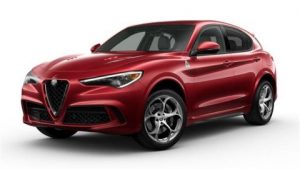Alfa Romeo is a high-performance brand with such a rich history. This includes the iconic Alfa Romeo Quadrifoglio badge. Quadrifoglio is the Italian word for a four-leaf clover. This symbol first appeared on these cars back in 1923, on one of the RL Targa Florio cars. There were 4 of these cars developed, made for 4 of their drivers to compete with: Ugo Sivocci, Enzo Ferrari, Antonio Ascari, and Guilio Masetti. This car was created specifically to compete in one of the most prestigious auto racing competitions back in that era, prepared by Guiseppe Merosi for Sicily’s Targa Florio. Before this era, Alfa Romeo didn’t see a whole lot of success in the competitive racing scene.
 One of these drivers, Ugo Sivocci, wanted to keep any bad luck away, so he opted to paint his grille with a white square where he put a four-leaf clover. This customization turned out to be precisely what the team needed, and Alfa Romeo managed to get their first win. A tragedy ended up occurring when he didn’t have this clover on a car when he was practicing for the Grand Prix of Europe. Ever since this moment, none of their racing vehicles would go out on the track without the Quadrifoglio badge due to their superstitions.
One of these drivers, Ugo Sivocci, wanted to keep any bad luck away, so he opted to paint his grille with a white square where he put a four-leaf clover. This customization turned out to be precisely what the team needed, and Alfa Romeo managed to get their first win. A tragedy ended up occurring when he didn’t have this clover on a car when he was practicing for the Grand Prix of Europe. Ever since this moment, none of their racing vehicles would go out on the track without the Quadrifoglio badge due to their superstitions.
This Italian automaker wanted to create a symbol that was as iconic and easily identifiable as any other automaker, which is why the Quadrifoglio seemed like the perfect choice for this brand. You can find this badge on the car’s side panels, either above or behind the front wheels, and on the front wings in newer, modern models. This article will walk you through the history of this badge.















